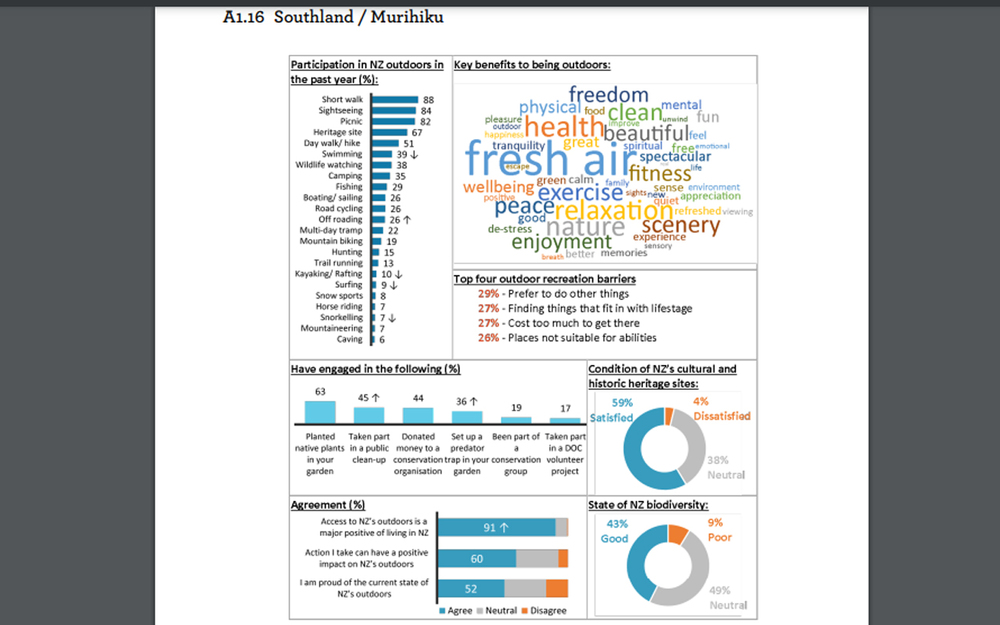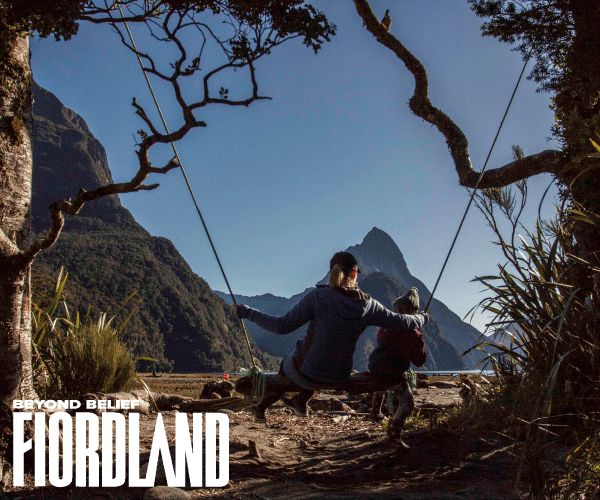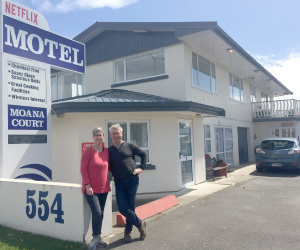Southlanders prefer short walks and a picnic over climbing and caving
02 October 2020, 4:45 PM
 Lake Te Anau, Murchison Mountains. PHOTO: Crystal Brindle/DOC
Lake Te Anau, Murchison Mountains. PHOTO: Crystal Brindle/DOCMore Southlanders have done a short walk and had a picnic over the last year than have climbed a mountain or entered a cave, according to a just released report by the Department of Conservation.
The “New Zealanders in the Outdoors – Domestic Customer Segmentation Research” is dated March 2020 – just before COVID-19 hit.
The survey was taken between September 2018 and February 2020.
Comments and responses from about 3,800 people revealed the top motivations for going outdoors was for mental health, physical health and a desire to connect with nature.
Advertisement
Advertise on the Southland App
It reveals most Southland respondents preferred a short walk (88%), sightseeing (84%) and picnics (84%), with just a handful preferring the hardcore adrenalin sports of mountaineering (7%) and caving (6%).
Many of the inhabitants in the heavily forested region plant native trees in their own gardens every year (63%).
There’s a strong sense of civic duty to the outdoors. A good chunk of Southlanders (45%) can be persuaded to take part in a public clean up every year.
But while 91% of Southlanders would agree that the outdoors is a major positive for living in New Zealand, just under half (49%) are neutral about the state of Southland’s biodiversity.

For Southlanders, the biggest barrier to getting outdoors is their preference to do other things (29%).
Some Southlanders struggle to find things to do that fit with their lifestage (27%), while the cost of getting outdoors is another barrier (27%).
DOC Strategy and Insights Manager Tim Bamford said the purpose of the research was to better understand New Zealanders’ experiences in the outdoors and nature.
The survey highlighted how being in nature contributed to the wellbeing of New Zealanders.
“In their comments, some of our survey respondents referred specifically to how being outdoors improved their wellbeing, using terms like ‘mindfulness’, ‘calmer’, ‘restful’ and ‘invigorated,” Mr Bamford said.
Advertisement
Advertise on the Southland App
The research has helped identify six key customers segments that show differences in how New Zealanders engage with the outdoors, including who is doing what.
Four were identified as being more active: Mindful Actives (21%), Social Actives (21%), Enthusiastic Actives (14%) and Stimulation Actives (11%).
Two were identified as less active segments: Home-Close Actives (13%) required outdoor places that were easier to access, especially for those with mobility issues.
Other Things Actives (20%) had limited engagement with the outdoors preferring to do other things.
Southlanders preferences were not out of kilter with the rest of the country.
Participation in the Outdoors

Graphic: Department of Conservation
The survey and analysis also revealed preferred outdoors experiences, with short walks (less than three hours) the leader, enjoyed by 91% of respondents.
Picnics and barbecues were enjoyed by 82% of respondents, followed by sightseeing (81%).
Day walks/hikes (52%) came joint fifth alongside swimming (52%).
“Significantly, visiting cultural or historic heritage sites was the fourth most popular outdoor experience, with 66% of New Zealanders showing a desire to connect with their history,” Mr Bamford said.
“Since the impacts of COVID-19 we’ve seen a desire from New Zealanders to get out into nature. The survey helps build DOC’s understanding of how and why people use the great outdoors so we can best cater to their needs and help build mutually beneficial experiences where people take time in nature for their wellbeing, and give back to nature for its wellbeing.”
Advertisement
Advertise on the Southland App
Meanwhile, DOC’s visitor data from selected popular public conservation areas for the year ending February 2020, suggests another year of high visitor demand.
The data was collected prior to COVID-19 travel restrictions.
Visitation to 9 out of 15 sites had increased by at least 5% over the last 3 years and 9 out of 20 sites had increased by at least 5% when compared with the previous year.
Some sites such as the Mangorei Track, in Taranaki and Blue Pools, near Wanaka, have had double the visits compared to 2016/17.

Lake McKenzie - Routeburn Track: PHOTO: Cyrstal Brindle/DOC
There was a decrease in visits at some places, often due to the impacts of extreme weather. Hooker Valley Track in Aoraki/Mt Cook National Park, Milford Sound/Piopiotahi and Franz Josef Glacier/Kā Roimata o Hine Hukatere had partial track or access closures which contributed to decreases in visitation.
“Since the impacts of COVID-19 we’ve seen a desire from New Zealanders to get out into nature. It’s fantastic to see so many New Zealanders making the most of their great outdoors this year and supporting domestic tourism across the regions,” DOC Heritage and Visitor Director Steve Taylor said.
“DOC has been pleasantly surprised that the number of nights booked on the Great Walks so far this year are actually quite significantly up on last year – an unexpected 59%. This doesn’t include the storm-damaged Milford and Routeburn tracks which will have a reduced walking season due to necessary repair work.”
“Alongside increased extreme weather events, reduced numbers of international visitors and potential COVID-19 capacity restrictions in DOC huts over the coming summer season are all likely to impact this year’s visitor numbers and revenue,” Mr Taylor said.
READ MORE:
The New Zealanders in the Outdoors report can be found HERE.
Visitor data for selected popular public conservation sides in 2019/20 can be found HERE.
AG | TRADES & SUPPLIES



